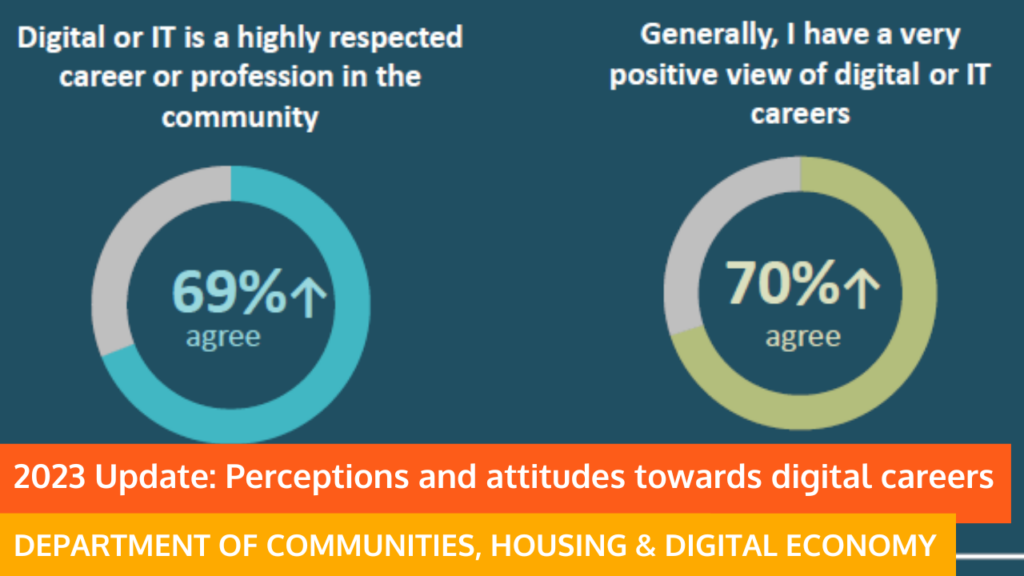In 2021 the Digital Professional Workforce Action Plan (DPWAP) conducted state-wide research with Queenslanders to generate a baseline of perceptions and attitudes towards digital careers. We have just repeated the study to measure any changes.
The key objectives of the study were to gather insights and monitor perceptions and attitudes towards a digital career especially among students, parents and career changers.
Findings from the research helps inform the development of programs and communications to help audiences understand the opportunities to learn new skills or reskill, and to encourage more Queenslanders to pursue a digital career.
The aim was to provide an overall measure of the perception of digital careers among the 880 Queenslanders surveyed.
In 2023, respondents aged 15-55 years were significantly more likely than in 2021 to have a very positive view of digital or IT careers (70%) as opposed to 64% in 2021. In 2023, 69% respondents agreed that digital or IT is a highly respected career or profession in the community with only 64% agreeing in 2021.
Other social and outcome-expectation factors also improved between 2021 and 2023 including a view that the industry is popular, provides flexible work arrangements, offers the opportunity to work overseas, and offers above average remuneration.
For those considering a career that requires digital skills, there is still significant disparity between males and females in 2023 (76% of males and 65% of females). Males were also more likely than females to:
- agree a digital or IT career or study option had been suggested to them (56% compared to 42% female)
- consider a career or job that requires digital or IT skills (76% compared to 65% female)
- suggest a career or job in digital or IT to their child/ren (76% compared to 59% female).
Among career changers however, the concept of including a short course or element of digital in their main program of study was appealing to both male (66%) and female (71%) career changers.
Overall, the results highlight that males are currently more positively predisposed to the industry than females. Consideration of ways to leverage the existing interest among males and increase interest among females will be incorporated into DPWAP’s programs as we plan for the final eight months of the program.
